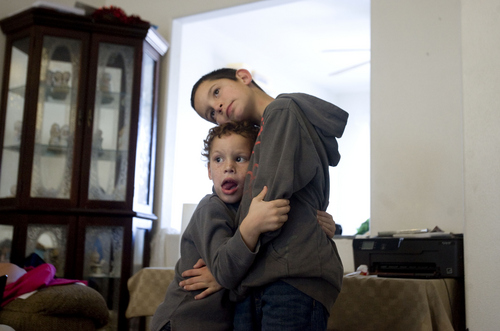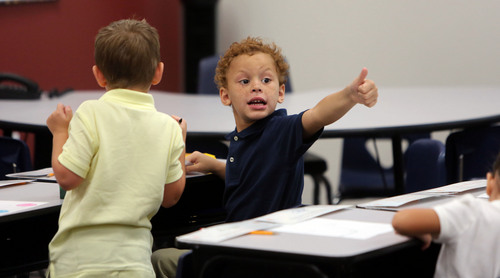This is an archived article that was published on sltrib.com in 2014, and information in the article may be outdated. It is provided only for personal research purposes and may not be reprinted.
Utah's autism rate continues to be above average, but it's holding steady at about 2 percent of the population as the national rate rises, the Centers for Disease Control and Prevention reports.
One in 54 Utah children have been identified as having an autism spectrum disorder, according to an analysis of 2010 data.
That's down from 1 in 47 in 2008, but still roughly 2 percent of the population, said Deborah Bilder, an assistant professor of psychiatry at the University of Utah and one of the study's principal investigators.
Among 11 sites monitoring autism for the CDC, only New Jersey has a higher prevalence, at 1 in 46 children.
Nationally 1 in 68 children meet the criteria for autism, up from 1 in 88 children in 2008.
The swing isn't a reflection of recent changes to diagnostic criteria, since the data preceded those changes, said Bilder, who surmises other states are playing catch-up and getting better at identifying autism.
"We don't know for sure but we think what we're seeing is that word is getting out there. People are more aware of autism. It's much more in the media and caregivers are seeing these signs and developmental concerns and getting them assessed," she said.
Autism is a complex disease that's defined by a cluster of behavioral symptoms — and not any known cause.
It's thought to have a genetic component; siblings of children with autism are at higher risk. But there are likely environmental factors that heighten or mitigate that risk, Bilder explained.
The new numbers for Utah confirm previous findings, she said.
The 2008 data were limited and pulled from the health and education records of 2,000 8-year-olds in Salt Lake and Davis counties. But the 2010 study covered a larger geographic region, including Tooele, and spanned 25,000 children.
"Two percent of the population is a high percentage, but it's here and holding. We know that's what we need to plan for as educators and health providers and policy makers," Bilder said.
In Utah the autism rate in boys is about four times higher than in girls.
Fewer than half of children are diagnosed by four years of age, though the diagnosis can be made in children as young as two.
But Latino children are now more readily diagnosed.
"Back in 2002 we had a lower prevalence in the Latino community, and there's no biological reason for that. We suspected it was because they weren't being identified," Bilder said.
But the gap has narrowed. In 2010 there was no statistical difference, said Bilder, who credits efforts by the Utah Parent Center and public schools to build awareness and improve access to care.
Families of children with autism scored a major victory this legislative session with passage of a bill requiring certain health insurers to cover autism treatment. Large employer and individual health plans sold or renewed starting Jan. 1, 2016, are subject to the mandate, but advocates hope others will follow suit.
Robert Ring, the chief science officer for the advocacy group Autism Speaks, said the national numbers are rising mostly because the disorder is detected earlier and more often than in the past due to awareness among parents and pediatricians.
Nonetheless, that does not explain all of the increase, he said during a press Washington D.C. conference at which advocates and a bi-partisan panel of senators and representatives urged more funding for research. The conference was streamed live.
While research has found a link between autism and parents' ages, that's just one "piece to the puzzle," Ring said. "It's an incomplete answer, an incomplete picture," he said, arguing for continued research funding.
Ring and elected officials identified two areas needing greater focus: early detection and young adults with autism.
Rep. Chris Smith, R-N.J., a longtime advocate for autism research and support, said federal, state and local governments need to work together and be more generous on the issue.
The new numbers, he said, are reason for alarm and part of an international "pandemic."
Increasingly, families and communities are grappling with young adults with autism who need help with housing, jobs and other services, he said. "We need the aging out issue to be addressed," Smith said.
Sen. Ed Markey, D-Mass., said, "In the 21st century, we don't need a mission to the moon. We need a mission to the mind."







